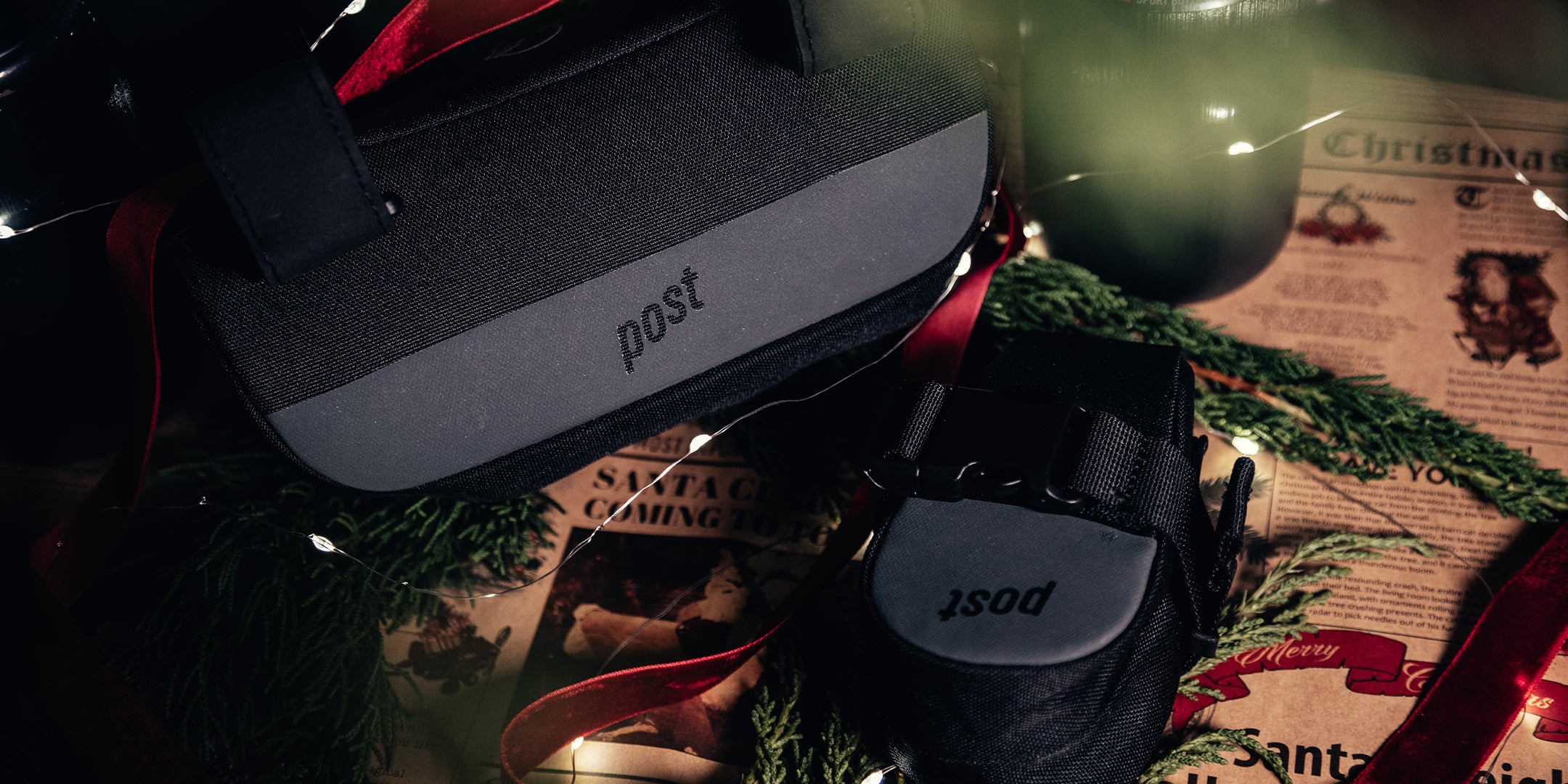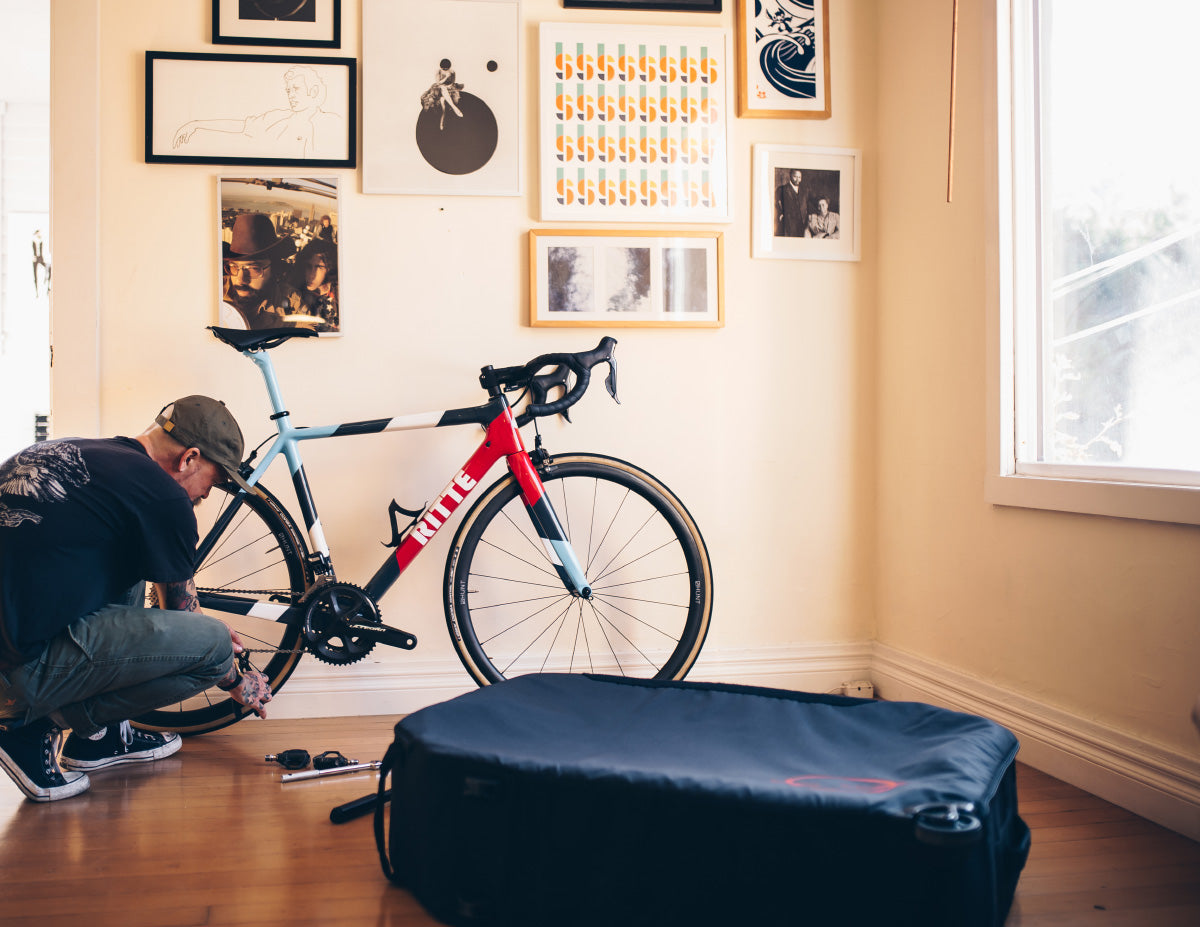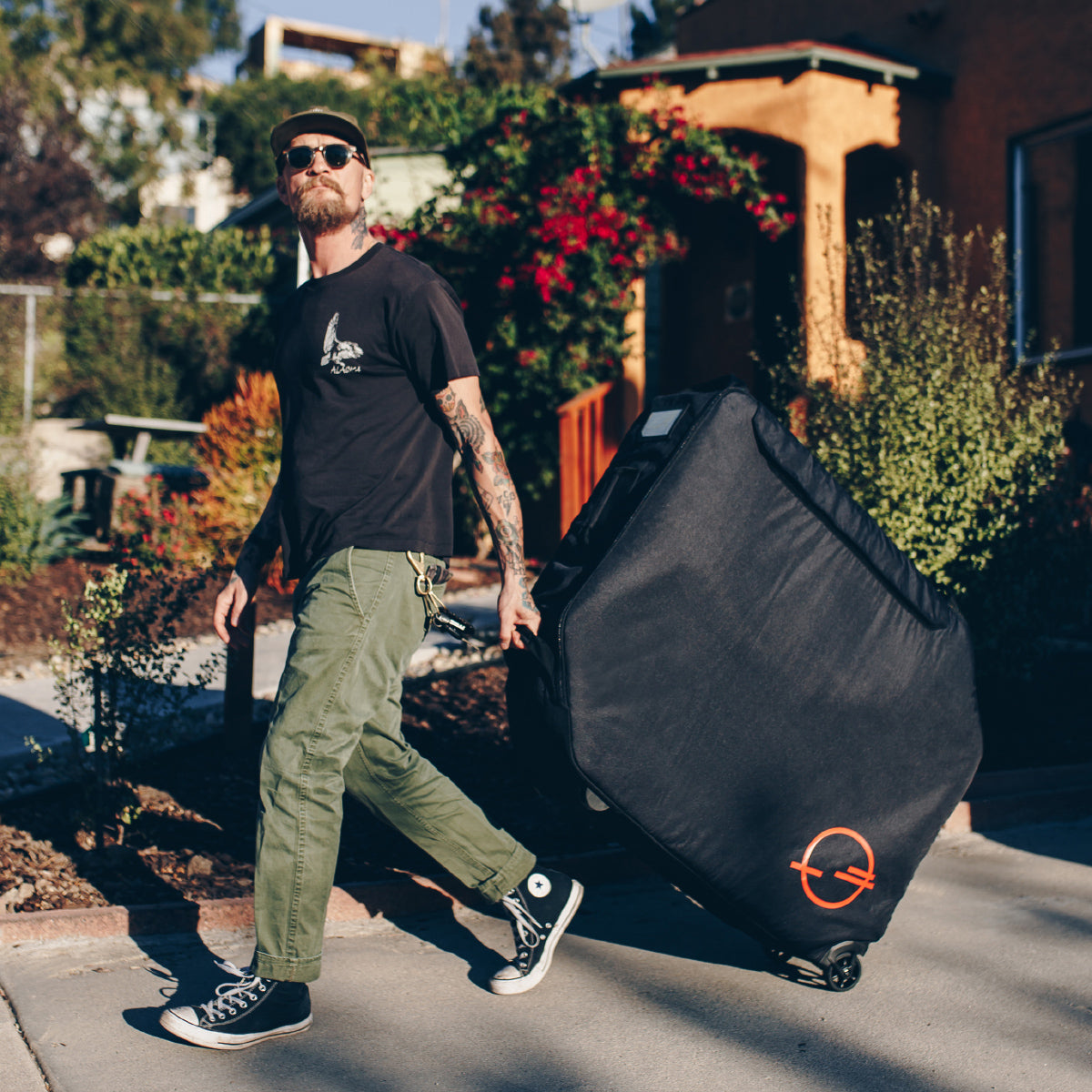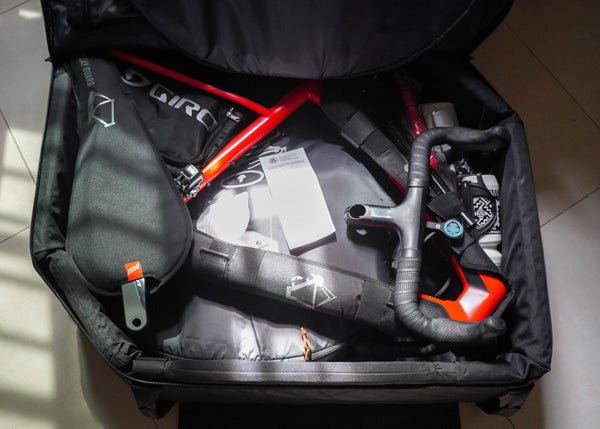
If you’re using the Transfer Case for the first time, it’s helpful to practice the packing/assembly process at least once before your trip. It might seem daunting if you’re new to bicycle maintenance, but after practicing once or twice, you will get so familiar with it that you won't think twice. Once you get the hang of it, packing or building the bike should take about 15 minutes.
After many trips and feedback from customers, I've nailed down a comprehensive list on what to bring while keeping it to a minimum.
Tools to bring for traveling with your bike

- Hex/Allen/Torx tools - Although you can get away with using a fold-out multi tool, I prefer to have a set of L-shaped hex keys instead. A trial run of packing and building your bike will help you determine exactly what size tools to bring.
- Pedal wrench - Depending on your pedals, you may need an 8mm hex wrench (which can often be part of the hex key set mentioned above) or a 15mm open-end wrench. Please check your pedals to determine which tool you need.
- Torque key - lightweight, easy to use and relatively inexpensive--torque keys are great for ensuring bolts aren't overtightened. Torque keys such as Ritchey's rated to 5nm are generally within the torque range of most stems and seatpost clamps. Please check your bike to determine which torque key is best for you.
-
Rear axle spacer/dummy hub - These are typically included with a bike in the packaging but many bike shops could have some laying around to give away. It can be anything placed in between the rear dropouts, such as a PVC pipe cut to the right length, to prevent the rear triangle of your frame from being squeezed. The fork does not need this spacer.

Now available for sale from Post is the Fouriers Dummy Hub which is a perfect structural replacement hub when you pack your bike. It's compatible for road and gravel bikes with a 12mm thru axle. - Sealable bags and disposable gloves - Store any loose parts like pedals, bolts or the chain in a sealed bag (Ziploc bag) and place them inside one of the compartments of the Transfer Case. A bag that can cover the fork is nice to prevent dirt or grease from getting on the Transfer Case. It's handy to keep a few extra rags and gloves to stay clean with!
-
A travel pump - Airlines won’t allow you to bring CO2 cartridges and will ask that you remove the air from the tires, so you'll need a way to bring your tires up to pressure without having a full sized floor pump on hand.

I've tested several "travel" pumps over the years but I often revert back to a simple frame or mini pump, which I works just fine for travel. While a frame pump takes a little bit longer to inflate your tires than a floor pump, a frame pump is nice to have since you can obviously ride with it (and not have to bring two separate pumps on the trip.) The Blackburn Core Slim Mini-Pump is my pump of choice because of it its flexible tube and slim size. It only takes just two or three minutes to inflate a 28C road tire, which isn't bad.
For inflating gravel tires, a larger portable pump would be ideal such as the Lezyne Micro Floor Drive or the Topeak Road Morph G Mini that feature a built-in gauge, fold-out feet and a handle to make inflation similar to using a floor pump. There's always a place to store things inside the Transfer Case.
Traveling with disc brakes and nice to have items

-
Centerlock lockring removal tool (for disc brake rotors) - Should you remove your brake rotors for travel? I recommend it, especially if your rotors are Centerlock which take just seconds to remove.

For Centerlock lockrings with an "internal" spline, a standard Shimano cassette tool is what you need. Although there are many internal spline tools out there, this offering on Amazon is actually my preferred lockring removal tool for travel. It's simply a standard cassette tool but with an adapter to take an 8mm wrench (which can act also as a pedal wrench for Shimano pedals), making it multi-functional and portable.
For Centerlock lockrings with an "external" spline, a Shimano external spline bottom bracket tool is usually the tool you need. Please check with your hub manufacturer to see which lockring format you have and which tool is required. -
Brake pad spacer (for disc brake bikes) - Simply to prevent the pads from being pressed in if the brake levers are squeezed accidentally. You can also use a piece of cardboard or any clean, non-metal object to place in between the pads. Don't worry, if you don't have the spacers and the pads get squeezed in, they can be spread back to normal using a plastic tire lever.

-
Chain master link - Although it's fine to skip removing your chain, some cyclists may prefer to remove it to make packing neater. Having a master link, such as KMC's Missing Link, allows the chain to quickly disconnected and removed. Carry a few extra master links with you, just in case!
It's also ideal to have master link pliers when disconnecting your chain. Lightweight, portable options to consider are the Pack Pliers by Wolf Tooth or the Clever Lever.
- Schrader > Presta valve adapter - On a trip to the rural provinces of the Philippines, I forgot my pump and a bike shop was nowhere to be found, let alone a presta-compatible floor pump. Since I keep a valve adapter in my saddle bag at all times, I walked to a local gas station and asked the attendant to fill up my tires using the valve adapter. There was no way for me to gauge the tire pressure, but I had it inflated just enough and later filled it appropriately at a bike shop.
- A backup derailleur hanger - With proper packing inside the Transfer Case, your frame will be well-protected from forces and impacts that might occur during travel. However, there are so many other ways a hanger might break off and it's good to keep a backup.
- Di2 wire removal tool - For Di2-equipped bikes with its battery mounted inside a seatpost, you'll likely have to disconnect the wire. The removal tool helps remove the wire without damaging the connector.
- Extra headset shims & spacers - since these can be easy to lose, it never hurts to carry extra.
- Grease & carbon paste - Bringing these can sometimes be optional, but many see packing their bike as an opportunity to service the bike so it doesn't hurt to bring. See the note below about re-applying grease to your bike.
Other tips while traveling with your bike
-
Mark all rider geometry positions - This helps when you reassemble your bike. With a silver Sharpie, mark the position of your seat post height, handlebar angle and alignment (in case you have to adjust the stem). It’s useful to have photos of your bike setup before you take apart the bike.

Should I re-grease my bike?
It depends on the state of your bike at the time of packing it. By taking the seatpost and fork off, you'll have components, such as the seatpost itself, headset bearings and fork steerer, that will likely show grease or dirt/grime. If your bike was recently serviced and relatively clean, you could get away with not wiping down these parts. If your bike hasn't been serviced, take this opportunity to clean the bike before packing it in the Transfer Case and apply new grease when you build it! Same goes with re-applying carbon paste on any carbon fiber part interface.
Generally, I don't re-grease for short trips and I only bring grease or re-apply grease if I'm staying at a destination for a long period of time.
Don't forget your shoes, kit, and... your seatpost!
Your cycling shoes and kits are a great way to fill any empty space and add cushioning inside Transfer Case after the bike is packed. Surprisingly, it's easy to forget to pack your seatpost so don't forget to pack that, too. And, of course, bring your helmet but I recommend to take it inside a carry-on luggage, if traveling by plane.
If you are unfamiliar with an item mentioned here, or you need a second eye to see if your bike is appropriate for travel, don't hesitate to send an email (info@postcarry.co) and we'd be happy to explain any step in further detail. We all know that mechanical mishaps are a part of cycling. We hope to provide as much preparedness and precaution to make your trip as smooth as possible!
- Marc
Founder @ Post





